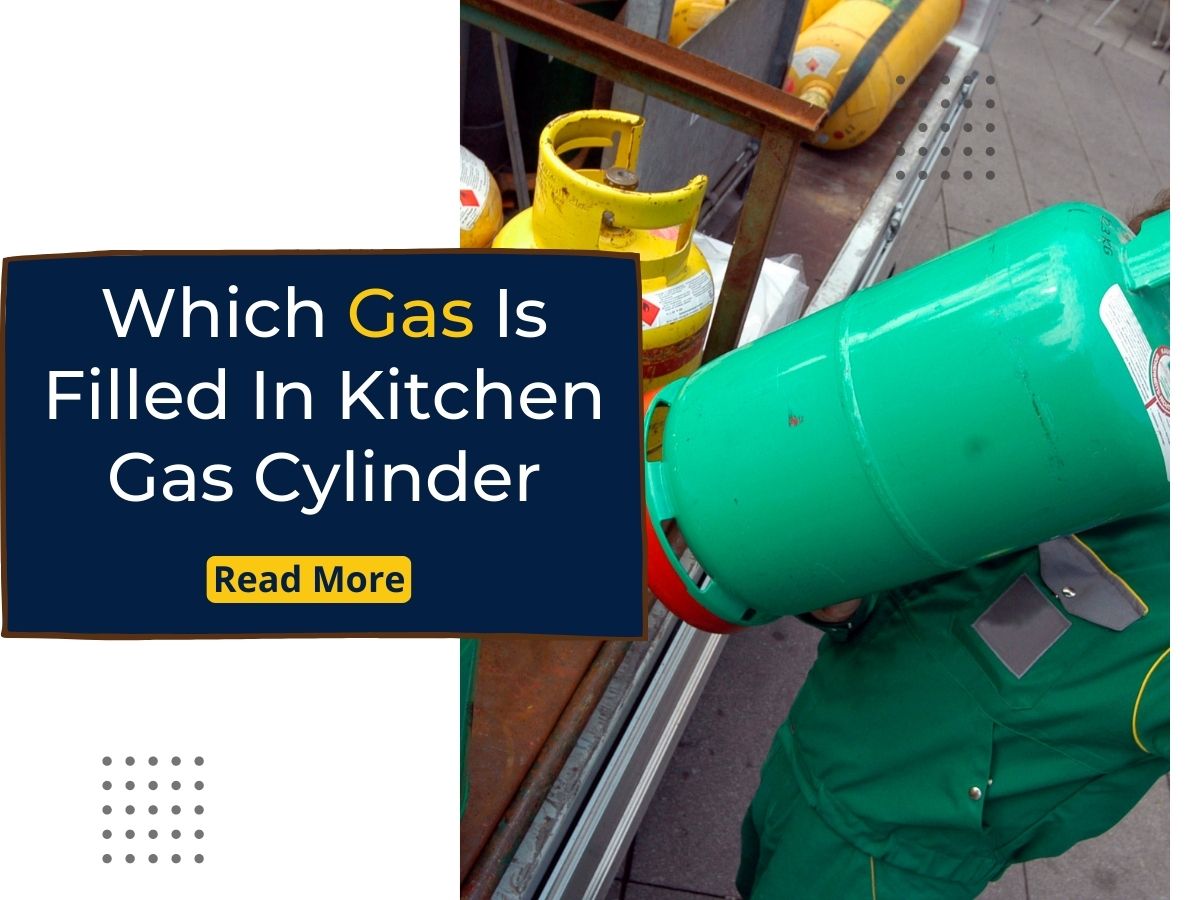Which Gas Is Filled In The Kitchen Gas Cylinder?

Kitchen gas cylinders are fitted with a gas that can burn in several ways, one of which is through an electrical spark. The type of gas used in the cylinder is usually known as LPG. The abbreviation stands for Liquefied Petroleum Gas, and most people are unaware of the dangers of this gas.
The introduction should tell what the post is about and why it's worth reading. It could also ask a question or further clarify what the blog post will cover.
What is LPG?
LPG is a flammable gas found in several industries, mostly for heating, refrigerators, and kitchen gas cylinders.
It is used as an alternative to butane, a fuel previously used as an energy supply to operate appliances such as ovens, cookers, and barbecues. It is also used for the domestic heating of houses and power gas burners, such as those in cookers.
LPG is refined from crude oil or natural gas at refineries and delivered to users in steel tanks. LPG, which is denser than air because of its high density, is an ignitable hydrocarbon-based gas.
LPG is the general term for butane and propane gases and their many mixes. In Turkey, LPG used in residential gas cylinders comprises 70% butane and 30% propane.
Features Of LPG:
LPG is a very low-cost fuel, which means it provides excellent cost-benefit.
It has many applications in the manufacturing industry and can be used for heating or cooling purposes. LPG is also used for cooking because it produces a high heat output and burns more cleanly than other fuels, such as oil and kerosene. In addition to this, it is easier to transport.
It also has an important place in transportation.
It can be stored in gas cylinders since containerization makes transportation of this gas easy and safe. It's stored under high pressure in cylinders. The pressure inside the cylinder is between 345 and 450 kg.
It can be used in many places without natural gas, such as flats, caravans, ships, buses, and trucks.
It produces less pollution than other fossil fuels.
It is also more economical than other fuels that burn on fireplaces or stoves. As it also contains oxygen, it supports the combustion process more efficiently than other fuels that do not contain any oxygen, such as wood or coal.
Is LPG toxic?
LPG is an inert gas. When breathed, neither LPG nor propane and butane is hazardous to the human body. It is a prevalent misconception that LPG is poisonous.
Deaths caused by LPG leaks are not the result of LPG's toxicity but rather its density, which lowers the amount of oxygen in the air.
Does LPG freeze?
LPG cannot freeze under typical environmental conditions due to its chemical characteristics. Even at 0°C, liquid LPG transforms into gas due to ambient heat energy transfer.
When the ambient temperature in the cylinder falls below 0°C, it becomes more difficult for LPG to boil because it cannot transfer enough energy.
As the cylinder attempts to transfer heat energy from the cylinder wall, the water vapor in the air first condenses into dew and then freezes.
This phenomenon, known informally as "frozen cylinder," results from water freezing on the cylinder walls. In such a scenario, the cylinder cannot create an appropriate volume of gas, and gas-powered equipment would not function. Therefore, the correct site for using cylinder gas is a well-ventilated room at room temperature.
Is LPG dangerous?
The LPG cylinders and LPG-powered devices made by the specifications are developed and fitted with stringent safety standards and safety components. In this way, LPG is comparable to other residential energy sources in terms of safety.
Your huge investment must not go in vain so get the best search options on finndit.com. to check the availability of kitchen-related Service providers near you.
